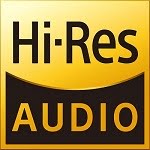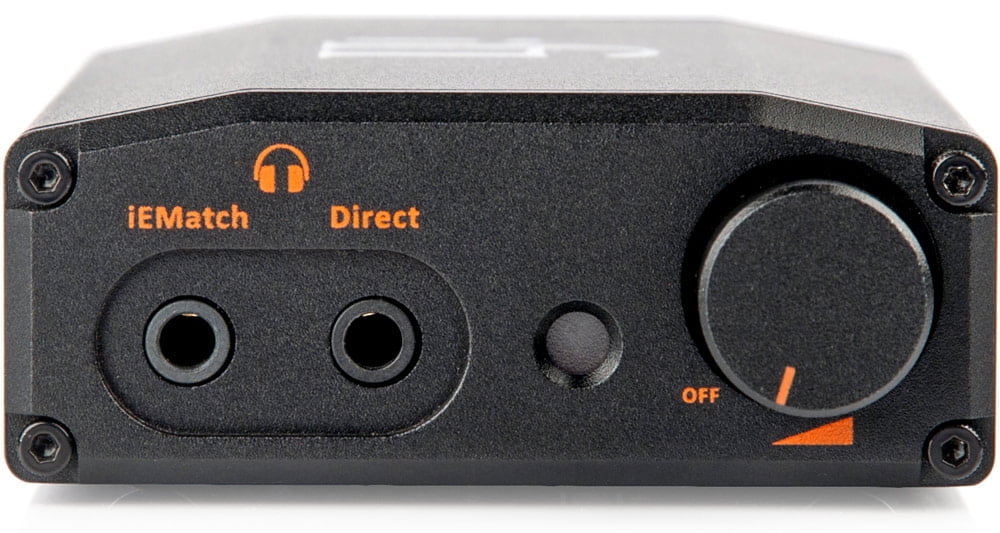Stream, stream, stream…
The nano iDSD Black Label is for those who enjoy great music on-the go.
From your phone, amplify your Spotify, Apple Music or Tidal using an Apple CCK cable or OTG cable for Android.
At home or in the office, use the USB3.0 cable provided to connect to your PC.

Res’ing it up!
The nano iDSD Black Label plays Hi-Res audio up to DSD256
so you can enjoy your tunes in the original format just as the artists intended.
Getting into MQA? The nano BL is MQA ready. Use it with Tidal ‘HiFi’ on your computer or mobile.
Also, Roon tested for simple set-up should you wish to give Roon a whirl.
The mighty nano
The nano iDSD Black Label is small but mighty with 10x more amplification power than an iPhone.
It can drive most headphones and has our iEMatch technology built-in, so it can work with In-Ear-Monitors (IEMs).
The in-built iFi iPurifier means it delivers clean, quality music with no buzz, no hiss and no fuss!

Brilliant balancing act
The iFi exclusive S-Balanced circuit provides all the benefits of balanced outputs such as low-noise and less distortion when used with headphones and IEMs fitted with balanced wiring.
For single-ended headphones, S-Balanced cuts crosstalk in half. The benefits are ‘clearly’ audible.
Listen. Measure.
Fancy getting technical? The nano BL has a Listen option (Minimum Phase Bezier Filter) and a Measure option (Linear Phase Transient-Aligned Filter) for those who like to try a variation to the playback.
We say just switch it on, plug in your device, and listen away.
There is no going wrong with 10 hours of battery life.
DACs convert digital information, stored or streamed by computers, into music we can hear through speakers or headphones.
Every device that’s a source of digital sound has a built-in DAC (TVs, games consoles, CD players, phones, portable music players etc). Dedicated external DACs sound much better than standard DACs used in digital devices such as phones.
So, why don’t we provide these two cables with our products?
The Apple CCK cable can only be purchased from Apple. We can’t make one ourselves as it has a special chip in the cable that we’d need to use for them to actually work with Apple hardware. Sadly, Apple has not released this chip to anyone.
We can and do make two versions of an Android OTG cable – Type C and micro.
DSD is a very high-quality digital audio format that’s even better than CD quality. The higher the ‘DSD rate’ – DSD64, 128, 256, 512 and 1024 – the greater the amount of music information available, which means better sound quality.
Files can be remastered to higher file rates to improve sound quality. The pinnacle of this is DSD1024. Not many machines out there are capable of this feat.
MQA is an award-winning British technology that delivers the sound of the original master recording. The master MQA file is fully authenticated and is small enough to stream or download. More here.
Tidal is a subscription-based audio streaming platform, similar to Apple Music and Spotify, but with lossless-quality audio. Tidal Masters is the section with the highest-fidelity music streamed including some files in partnership with MQA.
Lossless-quality means that no music quality is lost in this format.
IEMs stands for In-Ear Monitors.
These fit inside your ear. You’ve been using them for years. You just called them something else.
You will also see these referred to as earphones, ear buds and CIEMs. CIEMs are Custom In-Ear Monitors – IEMs made specifically to fit your ear shape.
MP3 – this is the most popular format, every device in the world can use it.
DSD – Direct Stream Digital is a very high-quality audio format, better than CD quality. The higher the number (sample rate), the better the recording – DSD64, 128, 256, 512 and 1024.
PCM – Pulse Code Modulation is the most common format for CDs and DVDs.
DXD – Digital eXtreme Definition is a very high-quality PCM format. It was developed to edit hi-res (high quality) recordings recorded in DSD.
For cost and convenience, modern DAC chips have a built-in digital volume control. The drawback is that a digital volume control works by ‘truncating’ the signal. Or ‘chopping Bits’ of resolution. For a 16-Bit music file at 50% volume level means the listener is actually listening to 14.5-Bits!
All iFi products bypass the digital volume control and use a separate analogue volume control which does not ‘lose Bits’ so a 16-Bit file stays unchanged which delivers maximum resolution.
Losing Bits of resolution (quality) is like having missing pixels on a computer or TV screen.
































